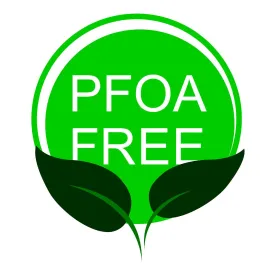In late February, the Wisconsin Department of Natural Resources’ (WDNRs) Natural Resources Board (NRB)—the entity that sets policy for the WDNR—took three steps toward the adoption of statewide standards for PFAS compounds. First, the NRB voted to adopt a drinking water standard of 70 parts per trillion (ppt) for two of the most common PFAS compounds; perfluorooctanoic acid (PFOA) and polyfluorooctane sulfonate (PFOS). The standard, if approved by the Wisconsin Legislature and adopted into Wisconsin Administrative Code Chapter NR 809, would apply to municipal water supply systems, as well as trailer parks, schools and other institutions that provide drinking water. Next, the NRB voted to adopt a surface water standard of eight (8) ppt for PFOS in most surface waters that can support fish, which if approved, would be implemented through additions to Wisconsin Administrative Code Chapters NR 102, 105, 106 and 219. Finally, the NRB rejected a request for approval of a PFAS standard for groundwater contamination.
PFAS chemicals were widely used from the 1960s to the early 2000s in the manufacture of a variety of consumer products, such as stain resistant carpets, non-stick cookware (e.g., Teflon), firefighting foam, food packaging (e.g., microwave popcorn bags/pizza boxes), water resistant clothing (e.g., pre-2000 GoreTex), water resistant repellent (e.g., Scotchgard) and dental floss. While the use of PFAS compounds has largely been phased out in the U.S., these compounds are still used in the manufacturing of many products worldwide.
These substances, known as “forever chemicals,” have received considerable attention by federal and state environmental regulatory agencies because of their resistance to chemical breakdown due to the chemical bond between carbon and fluorine atoms in the PFAS compounds, which is one of the strongest in nature. Because of this, humans can still be exposed to PFAS long after the chemicals were released into the environment. Due to this resistance to breakdown, PFAS chemicals can bioaccumulate and travel upwards through ecological food chains to humans (e.g., phytoplankton to zooplankton to fish to humans) and ingestion of fish from contaminated waters is a main contributor of exposure to PFAS.
The ingestion of PFAS from food that was contained in food packaging or from contaminated drinking water also serve as major exposure sources. A groundwater study in 2016 detected PFAS chemicals in the drinking water supply in over 20 states in the U.S. Further, it is estimated that the drinking water supply of approximately 16 million Americans has been impacted with PFAS chemicals. U.S. Center for Disease Control (CDC) health studies estimate that 98% of Americans likely have detectable concentrations of PFAS in their bodies, and medical studies have suggested that PFAS can cause thyroid disease, pancreatic dysfunction, hormone disruption, kidney and liver damage, and an elevated risk of cancer.
The WDNR had previously proposed to the NRB a standard of 20 parts per trillion for drinking water, which was originally recommended by the Wisconsin Department of Health Services. The 70 ppt standard that was ultimately adopted by the NRB is consistent with a health advisory standard that was issued by the U.S. Environmental Protection Agency (EPA) in 2016. However, as of the present, the EPA has not adopted a PFAS drinking water, soil and/or groundwater regulation-based standard as opposed to a health advisory standard. Recently, the EPA has been reviewing potential regulatory standards for PFAS compounds and in February of 2022 it issued notice of meetings to solicit public input in the development of PFAS drinking water regulations under the Safe Drinking Water Act.
The approval by the Wisconsin NRB to adopt the PFAS standards is just the first step in a process of adoption of the standards into the WDNR’s Administrative Code, which some have estimated could take 1-2 years. The next step is for the standards to be reviewed and approved by the Wisconsin Legislature's Joint Committee for Review of Administrative Rules.





 />i
/>i

